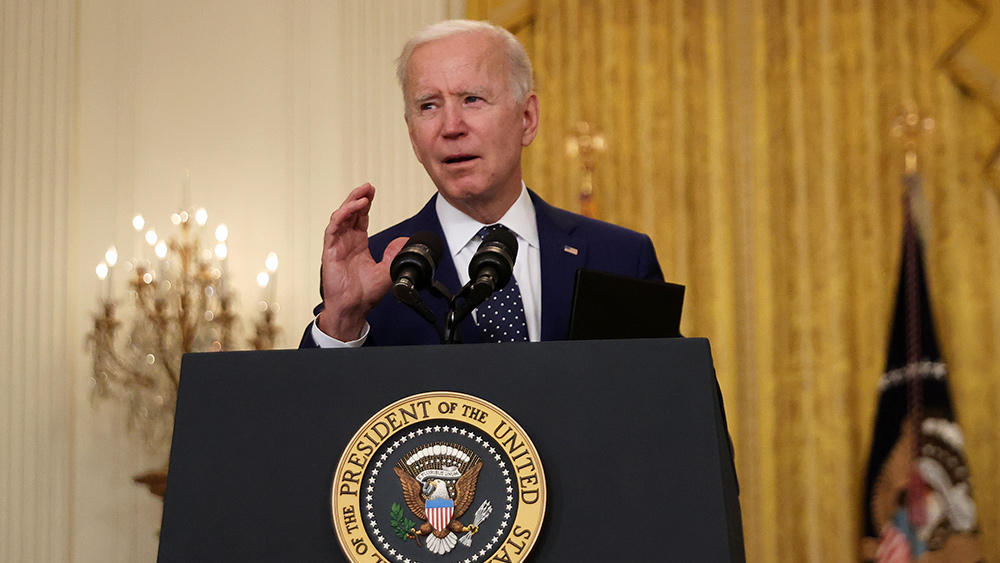CDC report: U.S. birth rate hit RECORD LOW in 2023, plummeting to 1.62 births per woman
05/06/2024 / By Laura Harris

Recent data from the Centers for Disease Control and Prevention (CDC) has revealed that the birth rate in the United States has hit an all-time low, plummeting to 1.62 births per woman in 2023, far below the replacement-level fertility rate of 2.1 births per woman of childbearing age.
According to data from the United Nations, the U.S. has had birth rates below the replacement level since 1972, with a brief exception when births rose between 2006 to 2007 before entering a constant state of decline.
The new CDC data shows that American women are giving birth at record-low rates. For instance, birth rates for women aged 20 to 24 decreased by four percent to 55.4 births per 1,000 women in 2023, while women aged 35 to 39 fell to 54.7 births per 1,000 women. In other words, women in their mid-to-late 30s are now having children at rates similar to those in their early to mid-20s. These figures show significant drops for those in their 20s and 30s, but birth rates for women in their 40s remain unchanged.
Birth rates for teenagers aged 15 to 19 also continue to decline, but the rate of decrease has slowed. In 2023, these rates fell by just three percent, contrasting with the average seven percent annual decline observed between 2007 and 2022. (Related: Census Bureau: U.S. population projected to begin declining by 2100.)
The overall fertility landscape depicts a widespread decline, with the general fertility rate dropping by three percent to 54.4 births per 1,000 women aged 15 to 44. This decline spans across most racial and ethnic groups. Fertility rates for Hispanic women, which slightly rose in 2022, fell by one percent to 65 births per 1,000 women in 2023. Similarly, among non-Hispanic groups, fertility rates decreased by five percent for American Indian and Alaska Native women and by three percent for both Black and Asian women.
We are building the infrastructure of human freedom and empowering people to be informed, healthy and aware. Explore our decentralized, peer-to-peer, uncensorable Brighteon.io free speech platform here. Learn about our free, downloadable generative AI tools at Brighteon.AI. Every purchase at HealthRangerStore.com helps fund our efforts to build and share more tools for empowering humanity with knowledge and abundance.
The 1.62 births per woman in 2023 represents the lowest rate recorded since the government began tracking fertility data in the 1930s.
Several factors driving the surge in childlessness
This development comes as women in America grapple with economic and social hurdles, leading some to postpone plans to have children or to fully opt out of becoming parents.
Various influences, including women having fewer children and doing so later in life, focusing on building rewarding careers and having increased access to birth control widely contribute to this trend. Additionally, younger individuals are facing greater uncertainty about their futures and allocating more of their earnings towards owning homes, repaying student loans and covering childcare expenses. Delaying childbirth may result in women having fewer children than they initially planned, partly due to declining fertility as they age.
“People are making rather reasoned decisions about whether or not to have a child at all,” said Karen Benjamin Guzzo, director of the Carolina Population Center at the University of North Carolina at Chapel Hill. “More often than not, I think what they’re deciding is ‘Yes, I’d like to have children, but not yet.'”
In a documentary titled “Birthgap – Childless World,” renowned data analyst Stephen J. Shaw mentioned several contributing factors to a dramatic surge in childlessness not just in the U.S. but across different countries within a short period.
Contrary to popular belief, the documentary reveals that the majority of childless women desire children, but finding the right partner within the optimal timeframe for childbearing is challenging. Factors contributing to this predicament include delayed childbearing until the closure of the fertility window, preference for partners of comparable education levels and shifts in societal dynamics such as increased female participation in higher education.
Learn more about declining populations across the world at PopulationCollapse.com.
Watch this episode of “Light Listening” discussing the reasons behind the sharp decline in U.S. births.
This video is from The Lightbulb Initiative channel on Brighteon.com.
More related stories:
Over HALF of America’s 24,295 cities could experience MAJOR DEPOPULATION by 2100.
Hospitals across the U.S. closing down MATERNITY WARDS due to staff shortages, low birth rates.
DEPOPULATION: Maternity wards across America are closing down as birth rates collapse.
Sources include:
Submit a correction >>
Tagged Under:
big government, birth rates, births, Collapse, degrowth, demographics, depopulation, Fertility, fertility rate, population, population collapse, replacement level, women's health
This article may contain statements that reflect the opinion of the author
RECENT NEWS & ARTICLES
COPYRIGHT © 2017 COLLAPSE.NEWS
All content posted on this site is protected under Free Speech. Collapse.news is not responsible for content written by contributing authors. The information on this site is provided for educational and entertainment purposes only. It is not intended as a substitute for professional advice of any kind. Collapse.news assumes no responsibility for the use or misuse of this material. All trademarks, registered trademarks and service marks mentioned on this site are the property of their respective owners.





















